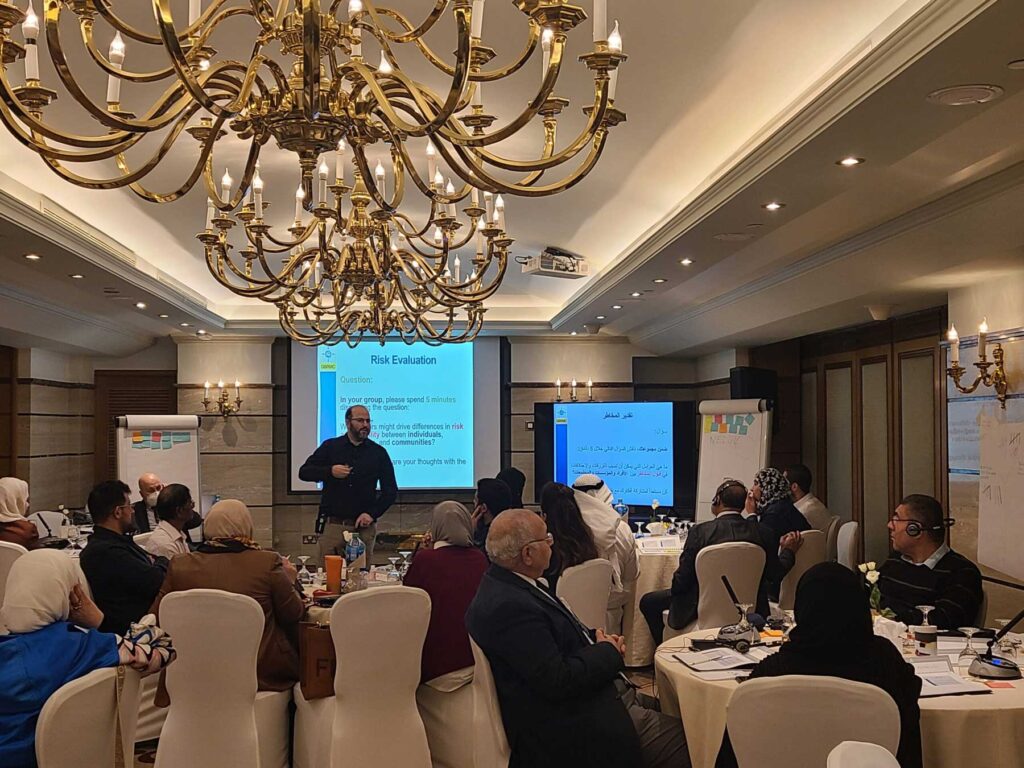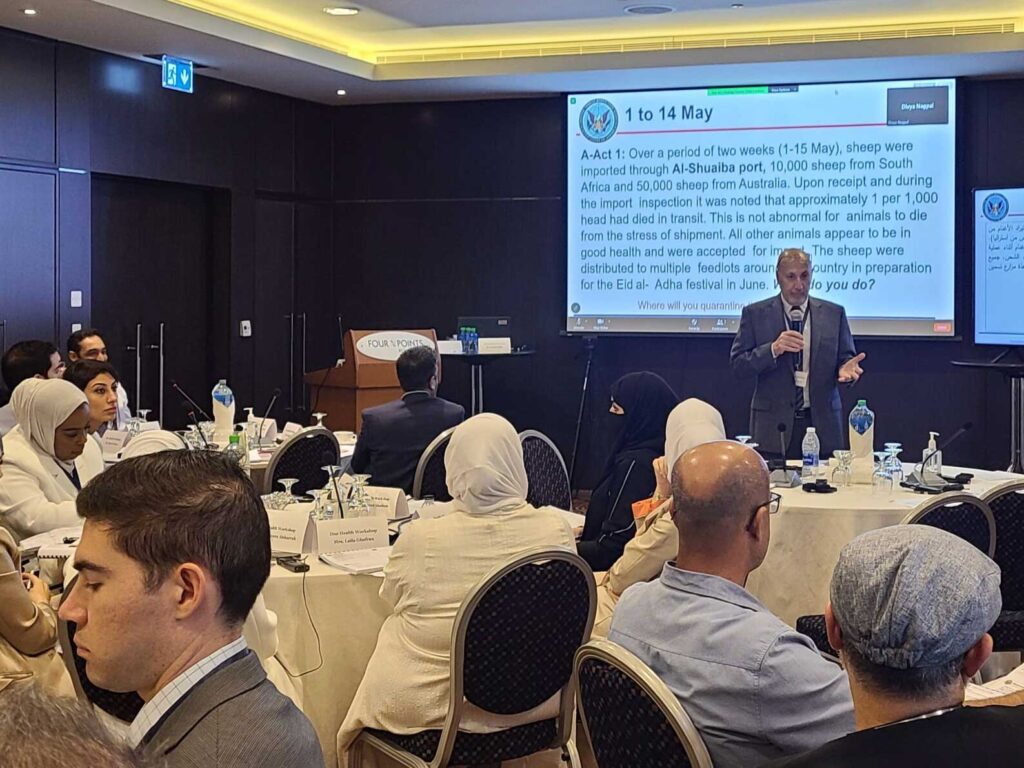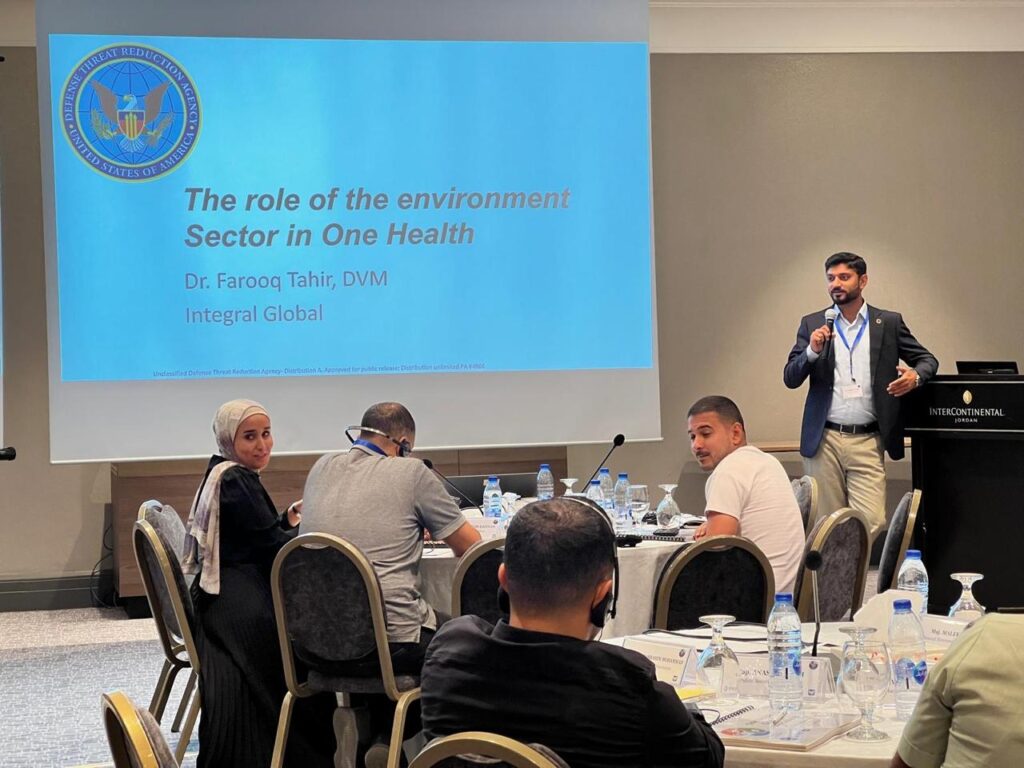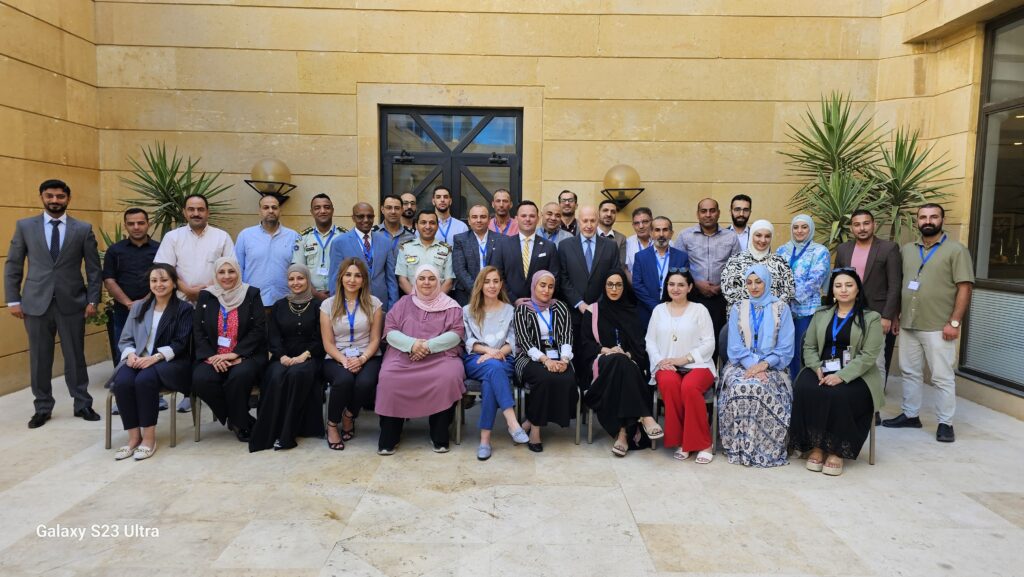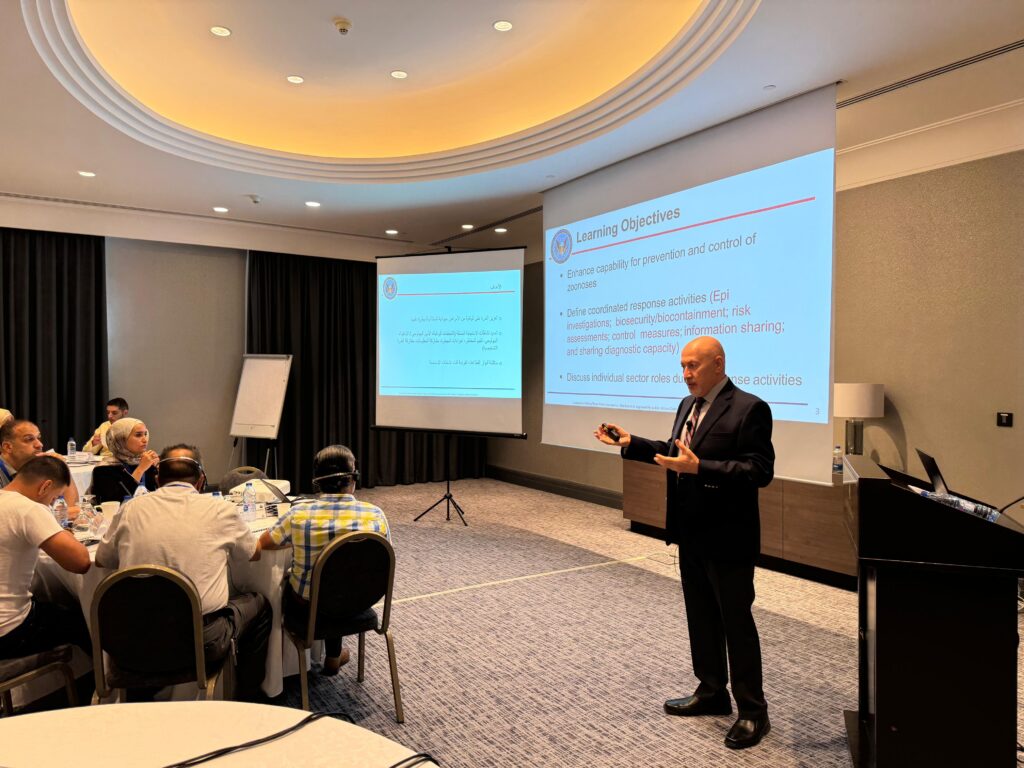In 2012, the Gulf experienced an epidemic of the Middle Eastern Respiratory Syndrome (MERS), which is similar in genetic structure to COVID-19, a fellow coronavirus. After the rapid spread of MERS, countries in the Gulf sought to improve their response to zoonotic pathogens to prevent future pandemics. Integral Global Consulting (IGC) collaborated with the Defense Threat Reduction Agency (DTRA)’s Biological Threat Reduction Program (BTRP) to implement One Health workforce capacity-building training in the Middle East.
BTRP is the U.S. Department of Defense (DOD)’s premier biological nonproliferation division, protecting the U.S. and its allies from biological threats. DTRA collaborated with partner countries and the international community to implement enhanced biosafety, biosecurity, and biosurveillance measures to minimize the threat of deliberate, accidental, and natural infectious disease outbreaks. In 2017, BTRP began implementing One Health-related trainings and workshops in the CENTCOM region that promote multi-sectoral coordination within BTRP partner countries to better mitigate biological threats.
IGC was contracted to increase workforce capacity in six Gulf Cooperation Council (GCC) member states (Bahrain, Saudi Arabia, Kuwait, Oman, Qatar, and the United Arab Emirates) and continued previously implemented work in Jordan. After all six trainings were complete, IGC conducted a forum to establish routine dialogue between each country and their ministries of environment, agriculture, and health to prevent future cross-border biological threats. IGC worked closely with implementing partners at the Centers for Disease Control and Prevention (CDC) and the U.S. Department of Energy Sandia National Laboratories (DOE/SNL) to complete this work.
In addition, IGC hosted an annual training in Jordan with the objective of improving national response to zoonotic pathogens by strengthening coordination between Jordan’s ministries of environment, agriculture, and health.
From July 21-25, 2024, IGC experts conducted a five-day One Health Concept Training and Mini-Tabletop Exercise (TTX) Workshop in Amman, Jordan. The training aimed to promote understanding of the core one health framework concepts in relation to biothreat reduction by bringing together participants from the human health, animal health, and environment sectors. Law enforcement, first responders, local administrations, Jordan Centers for Disease Control (JCDC), Royal Medical Services (RMS), and the National Center for Security and Crisis Management (NCSCM) were also invited. The workshop demonstrated how they could enhance their joint action. The workshop examined and outlined current inter-ministerial procedures to identify gaps in collaboration mechanisms, biosurveillance of zoonotic diseases, joint risk assessment, and coordinated investigation and response to emerging biothreats. Comprising six training modules, two exercises, and a mini tabletop exercise (mini-TTX), the training aimed to provide participants with a comprehensive understanding of best practices applicable in the event of a potential biological incident.
One Health Concept Training objectives included:
- Basic knowledge and skills required for inter-ministerial, interdisciplinary collaborations and communications before and during biohazardous events involving humans, animals, and the environment to include one health biosurveillance concept
- Review and define current ministerial procedures to identify gaps in collaboration and communication
- Create a suitable environment to ensure efficient, coordinated response efforts in the event of a potential biological incident

